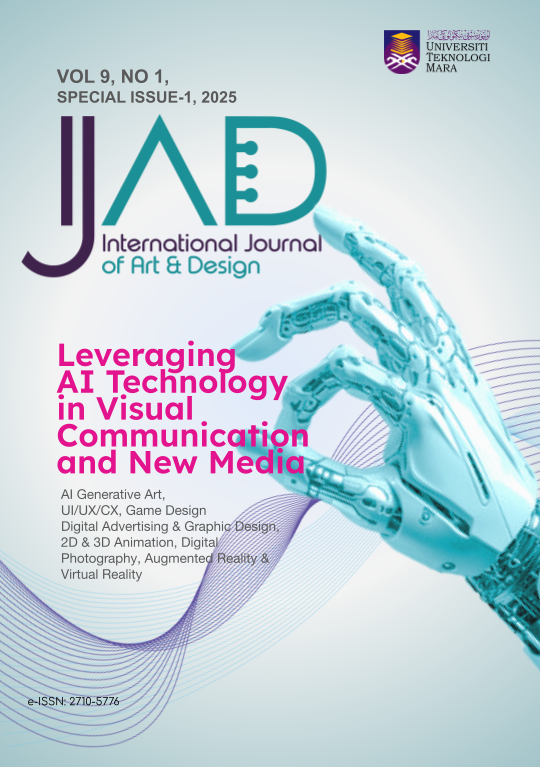The Application of Exaggeration Convey Believability: Case Study of Ping Pong The Animation (2014)
DOI:
https://doi.org/10.24191/ijad.v9i1/SI.2944Keywords:
Exaggeration, Animation Movement, Believability, Principle of AnimationAbstract
This study explores the role of exaggeration in animation, focusing on its impact on believability and storytelling, particularly within Ping Pong The Animation (2014). Despite its longstanding use in animation, the significance of exaggeration still needs to be explored. By applying the 12 Principles of Animation and Laban Movement Analysis (LMA) theory, this research examines how exaggerated movements, in conjunction with LMA's Shape and Effort, enhance the narrative by intensifying characters' actions, expressions, and emotions during high-stakes ping pong matches. The deliberate exaggeration amplifies tension, excitement, and energy, making the sequences visually compelling and emotionally resonant. The methodology aims to provide animators with insights into creating believable movements in animation, even within fictional worlds. The findings suggest that exaggeration is a crucial tool for enhancing the appeal and authenticity of animated sequences, offering a valuable example for the animation industry. This research contributes to the understanding of exaggeration's role in animation and serves as a reference for future studies, highlighting the importance of effective movement in engaging audiences and creating immersive, artistic animations.
Downloads
Published
Issue
Section
License
Copyright (c) 2025 International Journal of Art and Design

This work is licensed under a Creative Commons Attribution-NonCommercial-NoDerivatives 4.0 International License.






